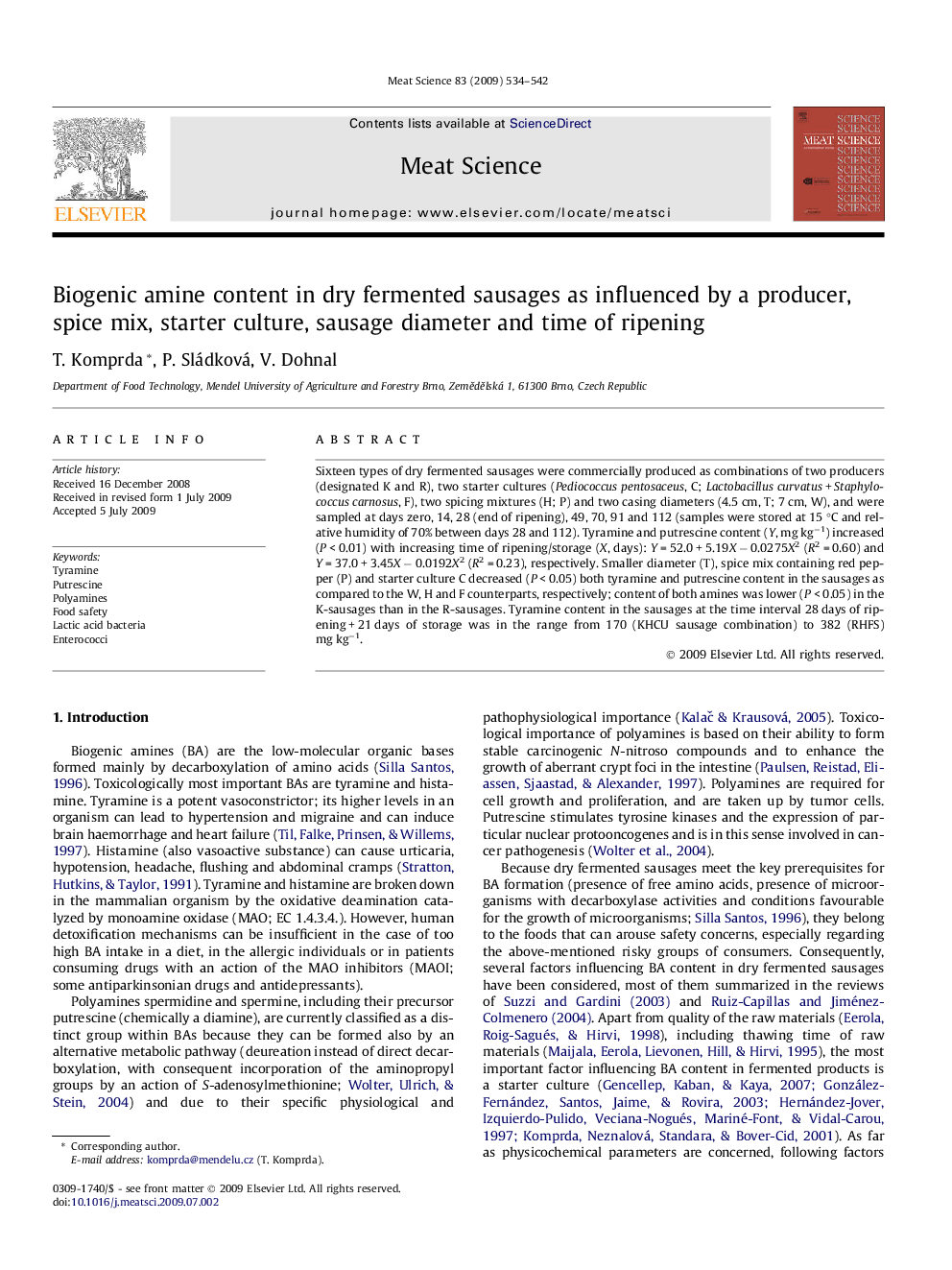| Article ID | Journal | Published Year | Pages | File Type |
|---|---|---|---|---|
| 2451074 | Meat Science | 2009 | 9 Pages |
Sixteen types of dry fermented sausages were commercially produced as combinations of two producers (designated K and R), two starter cultures (Pediococcus pentosaceus, C; Lactobacillus curvatus + Staphylococcus carnosus, F), two spicing mixtures (H; P) and two casing diameters (4.5 cm, T; 7 cm, W), and were sampled at days zero, 14, 28 (end of ripening), 49, 70, 91 and 112 (samples were stored at 15 °C and relative humidity of 70% between days 28 and 112). Tyramine and putrescine content (Y, mg kg−1) increased (P < 0.01) with increasing time of ripening/storage (X, days): Y = 52.0 + 5.19X − 0.0275X2 (R2 = 0.60) and Y = 37.0 + 3.45X − 0.0192X2 (R2 = 0.23), respectively. Smaller diameter (T), spice mix containing red pepper (P) and starter culture C decreased (P < 0.05) both tyramine and putrescine content in the sausages as compared to the W, H and F counterparts, respectively; content of both amines was lower (P < 0.05) in the K-sausages than in the R-sausages. Tyramine content in the sausages at the time interval 28 days of ripening + 21 days of storage was in the range from 170 (KHCU sausage combination) to 382 (RHFS) mg kg−1.
